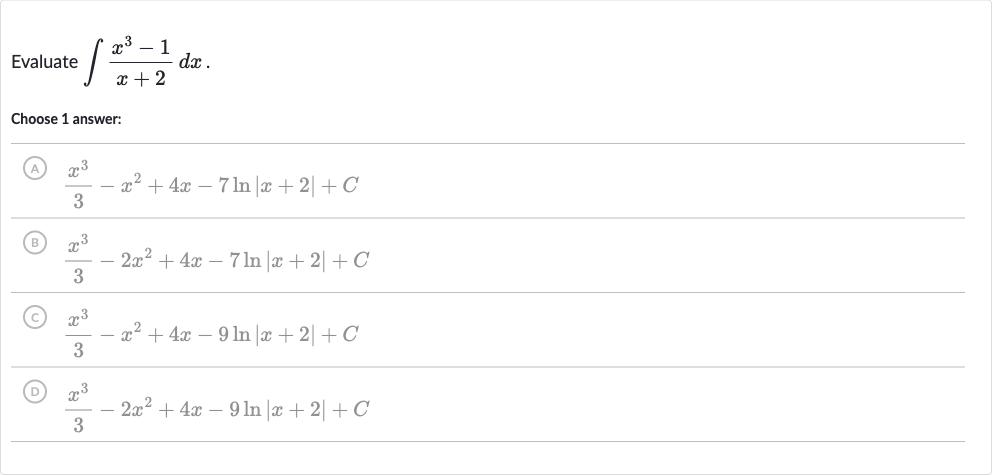AI tutor
Full solution
Q. Evaluate .Choose answer:(A) (B) (C) (D)
- Perform Polynomial Long Division: First, let's do polynomial long division to simplify the integrand.
- Integrate Each Term: Now, we integrate each term separately.
- Combine Integrals and Constants: Combine all the integrals and constants.
- Match with Given Options: Match the result with the given options.The correct answer is (A) .

